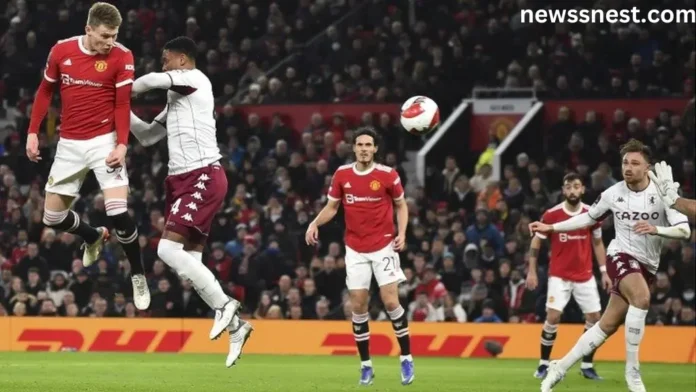Football, often referred to as the beautiful game, continues to captivate millions of fans around the world. As we enter 2025, the sport has undergone significant changes, with new technologies, evolving tactics, and global financial shifts reshaping the way the game is played, watched, and discussed. In this article, we take a closer look at the key developments in bbc football as it adapts to the modern world.
Technological Advancements in Football
Football has long been known for its rich history and tradition, but in recent years, it has embraced technology in ways that have transformed the sport.
VAR: Revolutionizing Decision-Making
One of the most significant technological advancements in football has been the introduction of the Video Assistant Referee (VAR). First implemented in 2018, VAR has now become an integral part of top-tier football. The technology helps referees make more accurate decisions by reviewing video footage of key moments during a match, such as goals, penalty incidents, and red card challenges.
While VAR has received mixed reactions from fans and players, with some arguing that it disrupts the flow of the game, its accuracy in ensuring correct decisions has been undeniable. As the technology continues to evolve, there is potential for further refinement, such as faster decision-making and a more transparent process for the fans in the stadium and watching at home.
Goal-Line Technology: Ensuring Fairness
Goal-line technology, introduced to ensure that referees can definitively determine whether the ball has crossed the goal line, is another vital advancement. The use of high-speed cameras and sensors has eliminated the uncertainty surrounding disputed goals, ensuring that crucial moments are decided with greater accuracy.
This technology is now standard in most major competitions, including the Premier League, UEFA Champions League, and the FIFA World Cup. It has helped restore fairness and clarity to the sport, particularly in high-stakes games where every goal counts.
Wearable Technology: Enhancing Player Performance
Wearable technology is also playing a significant role in modern football. Players now wear devices that monitor their heart rate, running speed, and overall physical condition. These devices provide invaluable data that helps coaches tailor training programs, assess player fitness, and even prevent injuries by detecting early signs of fatigue or strain.
As football evolves, the use of wearable technology will likely become more advanced, with real-time monitoring of players’ health during matches, allowing for immediate interventions if necessary.
Overview of wpial football news
Changing Tactics and Styles of Play
Football tactics are constantly evolving, with teams continuously refining their approaches to remain competitive in an ever-changing landscape.
The Rise of Positional Play and Tiki-Taka
In the early 2000s, a tactical revolution took place in Spain, where the Spanish national team and FC Barcelona implemented a style of play known as “tiki-taka.” This approach emphasized short, precise passing and maintaining possession of the ball. It was characterized by quick, one-touch passes and movement off the ball, and it led to Spain’s dominance in world football, with a Euro 2008 win, World Cup triumph in 2010, and another Euro victory in 2012.
The tiki-taka philosophy has evolved into what is known today as “positional play,” with teams focusing on creating numerical advantages in specific areas of the pitch. Coaches like Pep Guardiola have become synonymous with this style, and it has had a profound impact on the tactical landscape of football.
While tiki-taka’s dominance has waned in recent years, elements of the approach continue to shape the strategies of top clubs. The modern trend is a more fluid, hybrid approach where possession is still important, but quick transitions and direct counter-attacking play are also integral to success.

Overview of real madrid cf formation
Counter-Attacking Football: The New Powerhouse
One of the most notable tactical shifts in the past decade has been the rise of counter-attacking football. Teams like Leicester City, under the management of Claudio Ranieri, demonstrated the potency of swift counter-attacks during their stunning Premier League title win in 2016. More recently, high-energy teams like Liverpool and Manchester City have used counter-attacking strategies to great effect, often relying on pacey wingers and clinical finishers to exploit the spaces left by opposition teams pushing forward.
This style of football requires excellent organization, defensive solidity, and rapid transitions from defense to attack. In 2025, counter-attacking strategies are a staple for many of the world’s top teams, offering a balanced approach between defense and attack.
The Evolution of Pressing
Another major tactical development in modern football is the emphasis on high pressing. Teams now prioritize winning the ball back as quickly as possible after losing possession. This aggressive defensive strategy, often referred to as “gegenpressing,” has become synonymous with teams managed by coaches like Jürgen Klopp, who has led Liverpool to multiple titles using this style.
Gegenpressing involves intense pressure on the ball carrier and quick collective reactions to regain possession, often in advanced areas of the pitch. This has led to a greater emphasis on physical conditioning, mental sharpness, and teamwork, as players are required to work together to shut down space and force turnovers.
Financial Shifts and Globalization
Football has always been a multi-billion-dollar industry, but in recent years, there has been a dramatic increase in the financial clout of clubs and leagues. This shift is primarily due to the influx of commercial deals, television rights, and wealthy investors.
The Emergence of Super Clubs
A handful of elite clubs, often referred to as “super clubs,” have separated themselves from the rest of the pack in terms of financial power. Teams like Paris Saint-Germain, Manchester City, and Newcastle United have benefitted from significant investments, often from state-backed owners or ultra-wealthy individuals. These clubs can outspend almost any other team on the planet, leading to a concentration of talent in just a few select clubs.
This concentration of wealth has sparked debates about the future of competitive balance in football. While some argue that the influx of money has raised the profile of the sport globally, others worry that it may lead to an unequal playing field where only a handful of teams can realistically challenge for major honors.
Overview of real madrid cf formation
The Impact of International Broadcasting Rights
The global appeal of football is more apparent than ever. The expansion of broadcasting rights into new international markets has made the sport a worldwide phenomenon. The Premier League, for example, generates billions of pounds each season through its broadcasting deals, attracting fans from Asia, Africa, and the Americas. This has turned English football into a truly global spectacle, with fans tuning in from all corners of the globe.
As broadcasting technology continues to improve, football is also embracing streaming platforms, allowing fans to watch matches from anywhere at any time. This is part of a broader trend towards digitalization, which includes social media and online content that has further connected clubs to their fanbases.
The Future of Football: Trends to Watch
As we look to the future of football, there are several key trends to watch.
Sustainability and Environmental Concerns
Football, like many industries, is becoming increasingly aware of its environmental impact. In 2025, many clubs are taking steps to reduce their carbon footprint, from building sustainable stadiums to adopting eco-friendly travel options. There is also a growing movement to ensure that major tournaments, such as the World Cup, are held with consideration for the environment.
Women’s Football: Growing Strength and Popularity
Women’s football has seen exponential growth in recent years, with more media coverage, sponsorship deals, and international competitions. The success of tournaments like the FIFA Women’s World Cup and the increasing visibility of women’s leagues have helped propel the sport into the mainstream. As more young girls take up the game, the future of women’s football looks incredibly bright.
The Evolution of Player Welfare
The welfare of players is becoming an ever-greater concern. With the increase in fixtures, intense training schedules, and the pressure of international commitments, players are at risk of burnout and injury. In response, clubs and governing bodies are putting more focus on mental health, physical recovery, and overall well-being.
Data Analytics and AI in Football
Finally, data analytics and artificial intelligence are set to further revolutionize football. From match analysis to player recruitment, teams are increasingly using sophisticated algorithms to make data-driven decisions. AI could also play a role in predicting injuries, optimizing tactics, and enhancing fan experiences.
Conclusion
Football in 2025 is a sport that blends tradition with innovation. The tactical developments, technological advancements, and financial shifts have all played a part in shaping the game into what we see today. As the sport continues to evolve, its global reach and growing influence in society ensure that bbc football will remain the world’s most beloved game for generations to come. The future promises even more exciting changes, making football as dynamic and captivating as ever.
For more great updates, keep visiting newssnest.com


Your point of view caught my eye and was very interesting. Thanks. I have a question for you.
Thank you for your sharing. I am worried that I lack creative ideas. It is your article that makes me full of hope. Thank you. But, I have a question, can you help me?
Here, explore an extensive selection internet-based casino sites.
Interested in well-known titles new slot machines, you’ll find an option for any taste.
All featured casinos fully reviewed for trustworthiness, allowing users to gamble securely.
play slots
What’s more, the site offers exclusive bonuses and deals targeted at first-timers and loyal customers.
With easy navigation, locating a preferred platform happens in no time, enhancing your experience.
Stay updated about the latest additions with frequent visits, as fresh options come on board often.
Here, explore a variety virtual gambling platforms.
Whether you’re looking for traditional options latest releases, there’s something for every player.
All featured casinos fully reviewed for trustworthiness, allowing users to gamble securely.
1win
Moreover, this resource offers exclusive bonuses plus incentives for new players and loyal customers.
Due to simple access, locating a preferred platform takes just moments, saving you time.
Stay updated on recent updates by visiting frequently, as fresh options appear consistently.
I don’t think the title of your article matches the content lol. Just kidding, mainly because I had some doubts after reading the article.
Thanks for sharing. I read many of your blog posts, cool, your blog is very good.
Pretty! This has been a really wonderful post. Many thanks for providing these details.
Can you be more specific about the content of your article? After reading it, I still have some doubts. Hope you can help me.
Can you be more specific about the content of your article? After reading it, I still have some doubts. Hope you can help me.
Your point of view caught my eye and was very interesting. Thanks. I have a question for you. https://www.binance.com/en-IN/register?ref=UM6SMJM3
Your point of view caught my eye and was very interesting. Thanks. I have a question for you. https://accounts.binance.info/en/register?ref=JHQQKNKN
Your article helped me a lot, is there any more related content? Thanks!
Thanks for sharing. I read many of your blog posts, cool, your blog is very good.
I don’t think the title of your article matches the content lol. Just kidding, mainly because I had some doubts after reading the article. https://accounts.binance.info/en-IN/register-person?ref=UM6SMJM3
Thanks for sharing. I read many of your blog posts, cool, your blog is very good. https://www.binance.com/zh-CN/join?ref=VDVEQ78S
Thank you for your sharing. I am worried that I lack creative ideas. It is your article that makes me full of hope. Thank you. But, I have a question, can you help me?
Your article helped me a lot, is there any more related content? Thanks! flm usdt